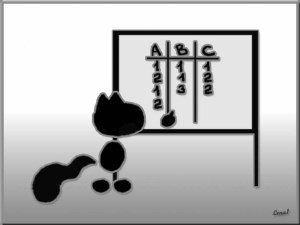Pairwise testing

Let our program take a dozen parameters. To test all combinations is very difficult, so you should choose the most common and potentially affecting each other. Bugs that arise by a particular combination of all ten parameters are rare.
The most common are bugs that arise by a particular combination of two parameters. The more information about the mutual influence of the parameters (more precisely – of the mutual non-influence), the more combinations we can not test. In the absence of such information, as well as by complex algorithms of program behavior, you should apply the method of pairwise testing.
Thus, we can simplify our task and test all the possible values for each pair of parameters.







